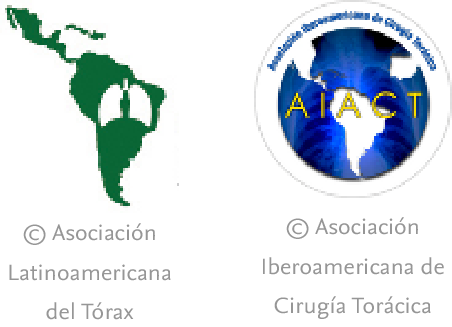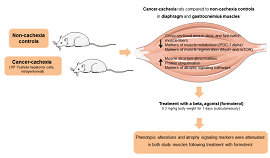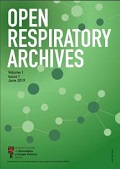Obstructive sleep apnoea (OSA) impacts nearly 1 billion people worldwide, with close to half affected by moderate to severe disease [1]. The prevalence is expected to increase significantly in the coming decades as aging, a key risk factor for OSA, continues to shape global demographics [2]. This is especially concerning due to the adverse health outcomes linked to the disease and its substantial associated costs.
The intermittent hypoxia, hypercapnia, fluctuations in intrathoracic pressure, and sleep fragmentation caused by OSA result in both short- and long-term consequences [3]. Short-term effects include excessive daytime sleepiness, fatigue, reduced quality of life, attention deficits, workplace absences, and an increased risk of traffic accidents. Long-term effects encompass a heightened risk or exacerbation of conditions such as metabolic disorders, cancer, renal dysfunction, sexual dysfunction, hypertension, Alzheimer's disease, and cardiovascular diseases. Although these effects of OSA are widely recognized, its impact on circadian rhythms remains overlooked.
The limited number of existing studies indicates that OSA is associated with disruptions in the daily expression patterns of several core clock genes, including BMAL1 (basic helix-loop-helix ARNT-like 1), CLOCK (circadian locomotor output cycles kaput), CRY1 (cryptochrome circadian regulator 1), CRY2, PER2 (Period2), PER3, and TIM (Timeless) [4]. These disruptions are thought to be mediated by hypoxia-inducible factor 1α (HIF-1α), a central regulator of the transcriptional response to hypoxia [5]. In fact, a complex bidirectional interaction exists between the circadian clock and hypoxia-signaling pathways. The global transcriptional response to acute hypoxia is both tissue-specific and time-of-day dependent, requiring an intact circadian clock. Hypoxia can induce phase shifts in circadian clocks in a tissue-specific manner, causing misalignment of circadian rhythms across different organs [6]. Notably, the mean 24-h transcriptome expression in cardiopulmonary tissues shows greater disruption after a 7-day exposure to intermittent hypoxia compared to that observed in the liver, kidney, skeletal muscle, and cerebellum [7].
At the clinical level, OSA may contribute to a shift from a normal dipper blood pressure circadian pattern to a non-dipper pattern, which is associated with an increased risk of hypertension and cardiovascular disease [8]. In addition, OSA reduces the amplitude and stability of the rest–activity rhythm, an effect that is partially reversed by the gold standard therapy with continuous positive airway pressure (CPAP) [9]. In contrast, the impact of OSA on the circadian regulation of other physiological processes, such as body temperature, as well as cortisol and melatonin secretion, remains less well understood.
While greater consideration has been given to how OSA affects circadian rhythms, emerging evidence indicates that the circadian system itself may influence OSA. The timing and duration of apnoea and hypopnoea episodes follow an endogenous pattern, with events becoming more frequent as the night progresses, leading to greater oxygen desaturation [10]. Shift work, a known disruptor of circadian rhythms, is associated with increased frequency and severity of apnoeic events, and shift workers with OSA typically exhibit higher apnoea–hypopnoea indices and more pronounced oxygen desaturation [11]. Together, these findings suggest that circadian disruption, whether from external factors like shift work or internal mechanisms related to OSA, may create a self-perpetuating cycle that worsens the condition. These insights support the potential of therapies aimed at stabilizing circadian rhythms to improve OSA management.
Disruption of circadian rhythms, as observed in conditions such as OSA, is independently associated with an elevated risk of metabolic, neurodegenerative, and cardiovascular disorders [12]. Blood pressure normally follows a circadian pattern, dipping by 10–20% during the night under healthy conditions, then rising in the morning and peaking in the afternoon. A shift from this typical dipping pattern to a non-dipping pattern, commonly observed in contexts of circadian rhythm disruption or OSA, is linked to increased cardiovascular risk. Observational studies have established OSA as a risk factor for the development of hypertension. Likewise, factors that disrupt circadian rhythms, such as shift work, are also associated with elevated blood pressure [13]. Experimental protocols inducing acute circadian misalignment in controlled laboratory settings have shown increases in 24-h systolic and diastolic blood pressure by 3.0mmHg and 1.5mmHg, respectively. Such misalignment has also been shown to elevate 24-h levels of pro-inflammatory markers, including interleukin-6, C-reactive protein, and tumor necrosis factor-α [14]. In addition to hypertension, OSA is a well-established risk factor for stroke, myocardial infarction, heart failure, cardiac arrhythmias, sudden cardiac death, and all-cause mortality. Similarly, circadian disruption has been linked to increased risk of ischemic heart disease, heart failure, and arrhythmias [15]. These overlapping effects raise the possibility that circadian disruption caused by OSA may exacerbate its long-term cardiovascular and systemic consequences. Further research is needed to investigate this potential amplifying interaction.
Taken together, such considerations highlight an urgent need for more rigorous research in this field. Future studies must overcome several common limitations, including small sample sizes, inadequate control groups (e.g., lack of polysomnography or respiratory polygraphy, potentially allowing inclusion of undiagnosed OSA cases), reliance on a single circadian marker, inconsistent timing of circadian assessments, and the absence of time-series analyses to capture diurnal variation accurately. Furthermore, poor control of confounding factors prevents the establishment of causality, rendering it uncertain whether the circadian alterations observed in individuals with OSA are directly attributable to the disorder itself or secondary to comorbid conditions and lifestyle factors, such as irregular meal timing and disrupted daily routines.
In conclusion, although only a few studies are available, current evidence suggests that OSA affects circadian rhythms, and the circadian system itself also influences OSA, potentially creating a self-perpetuating cycle that worsens the condition. Furthermore, the overlapping effects of circadian disruption and OSA raise the possibility that these two factors together may exacerbate risks such as cardiovascular disease and other systemic outcomes. These insights support exploring chronotherapeutic strategies to enhance current OSA treatments. Incorporating routine assessment of circadian rhythms during the initial evaluation of individuals with OSA may help identify those most likely to benefit from chronotherapy alongside CPAP, paving the way for a more personalized and effective treatment approach.
Artificial intelligence involvementNone.
FundingThis research did not receive any specific grant from funding agencies in the public, commercial, or not-for-profit sectors. ADST receives financial support from Instituto de Salud Carlos III (Miguel Servet 2023: CP23/00095), co-funded by European Union. MSdlT has received financial support from the “Ramón y Cajal” grant (RYC2019-027831-I), from the “Ministerio de Ciencia e Innovación—Agencia Estatal de Investigación”, cofounded by the European Social Fund (ESF)/“Investing in your future”. FB is supported by the ICREA Academia program.
Conflict of interestThe authors declare not to have any conflicts of interest that may be considered to influence directly or indirectly the content of the manuscript.









